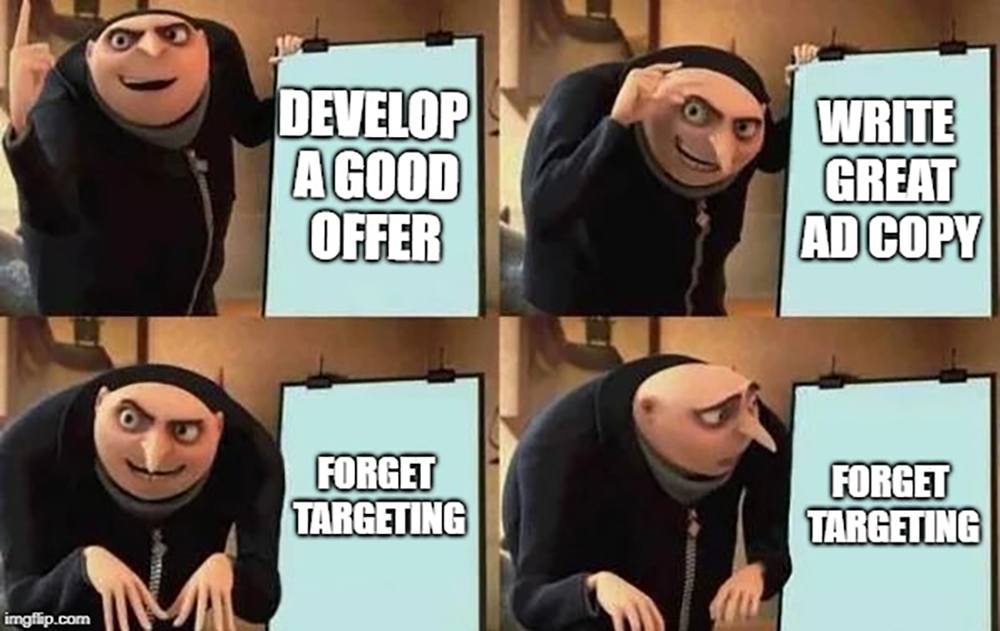Running paid campaigns can be complex and often involves failure, at least at first. But you can’t throw away every campaign that doesn’t perform right out of the gate.
It’s crucial you establish a process for troubleshooting underperforming paid campaigns, as it’s an ongoing process to improve performance. In this article, we’ll outline three major variables marketers should review when investigating performance issues and developing relevant solutions.
Make them an offer they can’t refuse
No matter how refined your targeting, no matter how compelling the ad creative, it doesn’t mean anything if you aren’t offering something the market actually wants, needs, or desires.
In the early days of my career, I ran paid campaigns for a mid-size software provider. Among other products, the company had built a software “solution” based on anecdotal evidence drawn from the CEO’s personal life without considering whose pain point they were solving outside that of the CEO’s. The problem is, there were dozens (if not hundreds) of similar software solutions already available, many of which were cheaper, easier to use, and already well-established in the extremely fragmented space.
No matter the ads we wrote, creative we crafted, or audiences we targeted, the campaigns didn’t perform. The CEO would often ask me why, and I had the pleasure of explaining to him that the product we were offering wasn’t what our prospective customers were looking for, which was then followed by a long lecture on how I just needed to “make it happen.”. Long story short, the company discontinued that software within a year of launching it, and all we had to show for it was wasted budget that would have better spent on other service lines that prospects were actually interested in.
Are you solving a problem? Are you providing value? Does anyone have a need for what you’re offering?
If you answered no to those questions, you can skip the rest of this post because this is the foundation upon which all successful campaigns are built, and no amount of churching up will remedy a poor offer.
Talk good, look pretty
Congratulations! If you’re still reading this, I’ll assume your offer isn’t terrible. Now that you’ve got that squared away, it’s onto the ad creative—copy and design.
A compelling offer is great, but what good is it if you can’t entice someone to learn more?
Using your copy/design to touch on your prospective customers’ pain points and positioning your offer as the solution is the surest way to get them to click and subsequently convert. On the other hand, an ad with an unclear offer is the easiest way to be overlooked, decreasing your performance and increasing your frustration. So, what constitutes an unclear offer? See below for a perfect example.
For those of you not in the know, the Mendieta Technique is a personalized Brazilian butt lift technique developed by Dr. Constantino Mendieta. But you wouldn’t have any way of knowing that from reading this, because this ad reiterates the same thing three times without mentioning a customer problem (in this case, a saggy bum) or how the Mendieta Technique can help. This ad makes my head want to explode.
Why waste time and money with paid campaigns if you’re going to deliver subpar copy and design?
Know your audience or you’ll have no audience
If you have a good offer and a good ad and you’re still having trouble, – it’s time to check your targeting.
It doesn’t matter if you have the best offer and a great message, if you put it in front of the wrong audience, it will fail. This is especially true for niche industries that lack broad appeal.
If you have an offer that appeals to a specific audience, good targeting can help you get the message in front of that specific audience. Understanding your audience and your market can ensure you’re putting your message and offer in front of the right people—because you’ll be everywhere that they are.
That said, this isn’t Field of Dreams—just because you built it, that doesn’t mean people will come. Targeting a big enough audience that allows you to scale with budget, but one that’s specific enough to reach your potential customers, is key. Know your audience or you’ll have no audience.
No failure is final
In my experience running paid media campaigns, these three issues are the most likely culprits when a campaign goes south. So if you’re scratching your head wondering where a campaign went wrong, checking your offer, ad copy and design, and targeting is a good place to start. From there, you can begin to diagnose and resolve those issues before you throw more money out the door.










